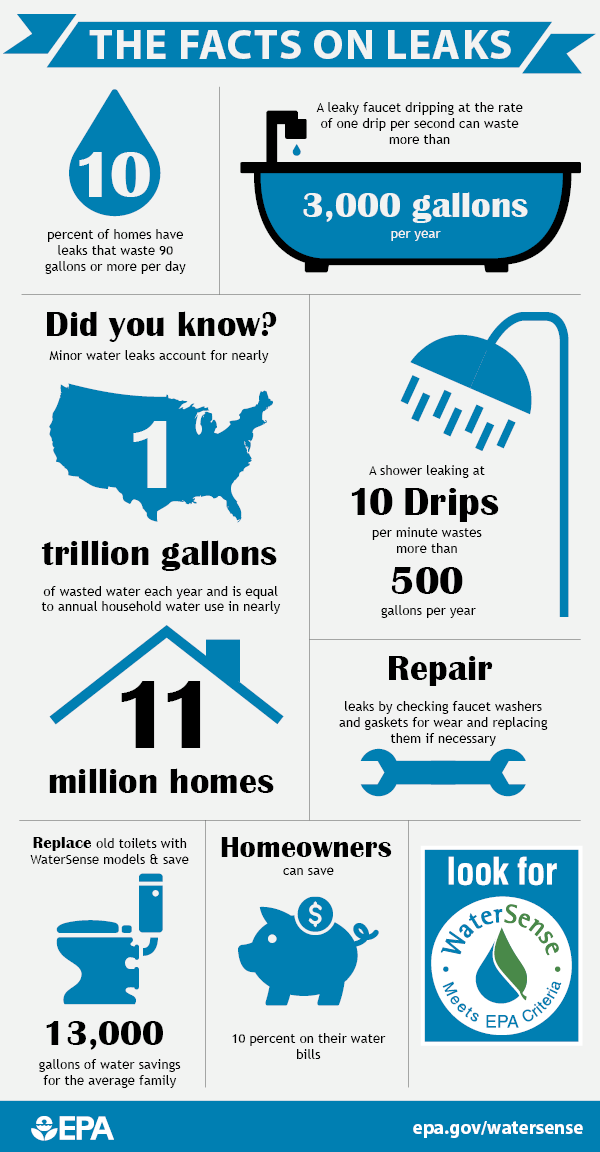As part of the U.S. Environmental Protection Agency’s (EPA) ongoing We’re for Water campaign, Fix a Leak Week takes place March 18-24, 2024. It encourages Americans to help put a stop to the nearly 1 trillion gallons of water wasted from household leaks each year.
The average home may lose almost 10,000 gallons of water every year, and 10% of homes have leaks that waste 90 gallons or more per day. That’s enough water to wash 300 loads of laundry. As a WaterSense partner, The Home Depot is encouraging consumers to find and fix leaks to save water in our community.
“The most common leaks in the home that waste the most water include dripping faucets, dripping shower heads, and running toilets. Regular Maintenance can avoid losing thousands of gallons of water, and they’re easier projects than you might think” says John Hembree, associate product development merchant for faucet and toilet repair at The Home Depot. Fixing these common leaks can save about 10% on the average water bill. Here's how to identify if you have a hidden leak and ways to fix the most common culprits.
Do You Have a Leak?
The first step is identifying the problem. Check your water meter before and after a 2-hour period of no water usage. If the meter changes, that means water is running somewhere and you have a leak. Toilet leaks can be subtle and quiet. Place a drop of food coloring in the toilet tank and wait 10 minutes. If any of the coloring appears in the toilet bowl, then your toilet flapper is leaking.
Fix a Leaking Faucet
Inside of faucet handles are mechanisms called cartridges. These regulate the water supply line as it flows out of the spout. Cartridges include washers or “O-rings” that create a seal to prevent dripping. Over time, O-rings can wear out and will need to be replaced.
If replacing the washer does not fix the problem, try replacing the cartridge with a faucet repair kit. For single-handle bathroom sinks, you’ll likely need to replace the ball valve assembly instead. Here’s a step-by-step guide on how to replace a bathroom faucet if the problem persists.
Fix a Leaking Shower Head:
The source of leaking shower heads and bathtub spouts is similar to faucets. The water flow is regulated by a cartridge behind the faucet handle(s) on the wall. Check the washers, O-rings other internal components for rust and excessive wear and replace the bathtub cartridge if needed.
Fix a Running Toilet:
The most common failure point on a toilet is the flapper. It’s the rubber valve seal that holds water in the tank and releases water into the bowl after each flush. Failing flappers can often leak silently, causing you to lose thousands of gallons of water a year before you even notice an issue. WaterSense recommends proactively replacing your toilet flapper every 5 years.
While other types of leaks in the home are possible, these are the most common. If your in-ground irrigation system is leaking or if you have a leaking pipe, contact a licensed plumber to identify and fix the problem.

For more information and tips about how to save water during Fix a Leak Week, visit http://www.epa.gov/watersense. The Home Depot offers helpful tutorials here on Eco Actions, and check out HomeDepot.com for WaterSense-labeled plumbing parts in and around your home.






